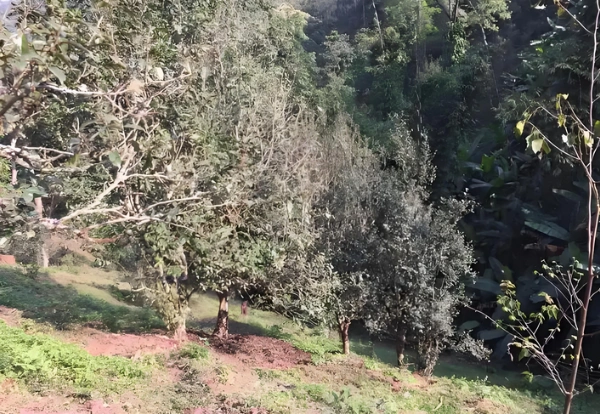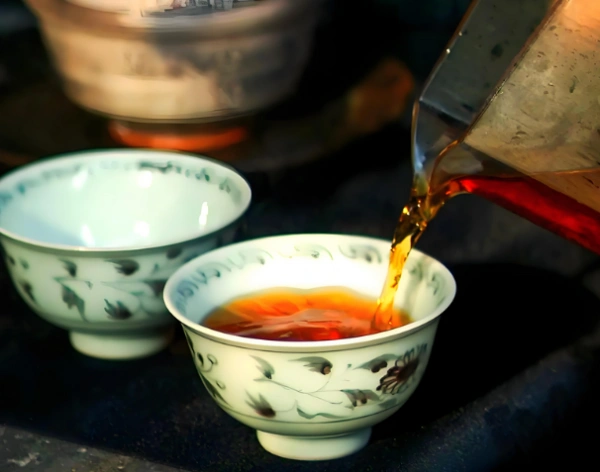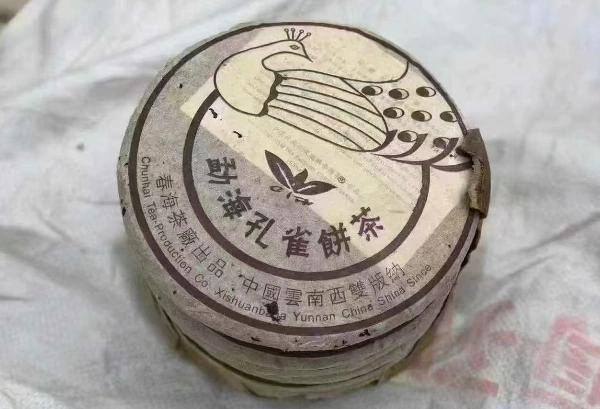Pu erh tea for beginners invites you to explore the rich tapestry of Yunnan’s misty mountains, where sun‑wilted leaves transform into deep, nuanced brews. Imagine cradling a warm cup of dark amber liquid, inhaling earthy notes of damp forest floor, sweet plum, and aged tobacco.
For newcomers, pu erh’s complexity might seem daunting—but this guide demystifies everything from raw versus ripe varieties to essential tools, brewing techniques, and storage secrets. Along the way, you’ll savor the cultural charm and tap into pu erh tea benefits—from potent antioxidants to gentle cholesterol support. Ready to steep your first infusion and awaken your senses? Let’s begin.
1. What Is Pu Erh Tea? Origins, Types, and Key Characteristics
Pu erh tea originates exclusively from Yunnan Province, China, where ancient tea trees—and sometimes centuries‑old wild arbor tea—provide the raw material for this post‑fermented marvel. Two main styles dominate:
- Raw (Sheng) Pu Erh: Leaves are sun‑wilted, lightly oxidized, then pressed into cakes. Fresh young sheng tastes grassy and brisk; over years or decades, it morphs into mellow, honey‑sweet complexity.
- Ripe (Shou) Pu Erh: Undergoes “wet piling” (wo dui) fermentation, yielding dark, earthy teas in months rather than years. Ripe pu erh offers cocoa‑like aromas and a smooth, velvety mouthfeel from the start.
Whether you choose a bright sheng or a robust shou, understanding pu erh’s origins and processing helps beginners appreciate its depth.

2. Why Newbies Love Pu Erh: Flavor, Health Perks, and Cultural Charm
For new tea drinkers, pu erh offers:
- Intriguing Flavor Profiles: From brisk green notes to aged wood and camphor in ancient Arbor pu erh, every sip reveals new nuances.
- Health Benefits: Pu erh tea contains antioxidants and theabrownins shown to support healthy cholesterol levels and oxidative balance【1】.
- Cultural Ritual: The gongfu tea ceremony—using a gaiwan or yixing teapot—turns brewing into a mindful ritual, perfect for tea beginners seeking a sensory practice.
Embrace these perks as you learn how to select, brew, and store pu erh tea.
3. Choosing Your First Pu Erh: Raw vs. Ripe and Menghai Pu Erh Tea Highlights
When starting, consider:
| Style | Flavor Profile | Beginner Fit |
|---|---|---|
| Raw (Sheng) | Grassy, floral, brisk → honeyed over years | Choose lightly aged (2–3 years) for smoother taste |
| Ripe (Shou) | Earthy, cocoa, velvety | Instant enjoyment; forgiving of brew variations |
Menghai Pu Erh Tea—from the famed Menghai County—offers both young raw and well‑aged ripe teas prized for consistent quality. Beginners might start with a ripe Menghai shou pu erh to experience pu erh tea’s signature earthiness without steeping complexities.
4. Pu Erh Tea Brewing Guide for Beginners
Master pu erh tea brewing guide essentials with this simple routine:
- Gather Tools: A gaiwan or small yixing teapot, fairness pitcher, tasting cups, tea scale, and kettle with temperature control.
- Water Temperature & Ratio:
- Raw: 90–95 °C (194–203 °F)
- Ripe: 95–100 °C (203–212 °F)
- Tea-to-water: 5 g per 100 ml water (≈1 tsp per 2 oz).
- Rinse: Quick 5‑second rinse to remove dust and awaken leaves.
- Steeping Times:
- 1st infusion: 10 s
- 2nd: 15 s
- 3rd: 20 s
- 4th+: add 10 s per infusion, up to 6–8 steeps.
- Serve: Pour into fairness pitcher, then into small cups to savor aroma and taste evolution.
Following this pu erh tea brewing guide ensures balanced, flavorful infusions for beginners.

5. Tasting Notes: What to Expect from Your First Infusion
Your inaugural pu erh sip may surprise:
- Raw Pu Erh: Look for bright orchard fruit, vegetal sweetness, and a brisk, refreshing finish.
- Ripe Pu Erh: Notice deep chocolate, espresso, or licorice notes, with a silky smooth mouthfeel.
- Aged Pu Erh: Experience layered complexity—camphor, tobacco, dried plums—that unfolds over multiple brews.
Sip mindfully, inhaling each aroma and noting tactile sensations. Taste journaling can deepen your appreciation.
6. Simple Storage Tips: Pu Erh Tea Storage Basics to Preserve Freshness
Proper pu erh tea storage is essential for beginners who wish to safeguard flavor:
- Short‑Term (Weeks–Months): Airtight canister in a cool, dry spot away from light and odors.
- Long‑Term (Years): Porous clay jars or bamboo baskets in a stable, ventilated environment (60–70% humidity, 15–25 °C).
- Avoid: Direct sunlight, strong odors (spices, cleaning agents), and extreme humidity (>75% RH).
By following these pu erh tea storage basics, you’ll maintain freshness and allow raw pu erh to age gracefully.
7. Common Missteps & How to Avoid Them
Even seasoned drinkers slip up. Beginners beware:
- Over‑brewing: Leads to bitterness—adhere to recommended steep times.
- Water Too Hot: Burns delicate raw pu erh—measure with a thermometer or use a temperature‑controlled kettle.
- Poor Storage: Exposes tea to mold or stale flavors—choose proper containers and locations.
Correcting these common errors sets you on the path to consistent, enjoyable pu erh experiences.

8. Beyond the Basics: Exploring Aging, Blends, and Tasting Journeys
Once comfortable with your first pu erh, expand your horizon:
- Aging Your Own: Store young raw pu erh properly and sample its evolution over months or years.
- Blends & Flavored Pu Erh: Discover subtle jasmine‑scented sheng blends or fruit‑infused ripe teas.
- Tasting Parties: Share different vintages or origins—Menghai vs. Jingmai—to train your palate.
These explorations transform pu erh from a beverage into a lifelong sensory adventure.
9. Next Steps: Building Your Pu Erh Tea Collection and Daily Ritual
To cement pu erh tea for beginners in your life:
- Sample Packs: Purchase small amounts of raw, ripe, and aged teas to find your preference.
- Daily Routine: Carve out mindful tea moments—morning clarity, afternoon pause, or evening reflection.
- Connect & Learn: Join tea communities, workshops, or local tea houses to refine your skills and share insights.
Gradually, pu erh tea will become a cherished part of your wellness ritual and cultural exploration.



